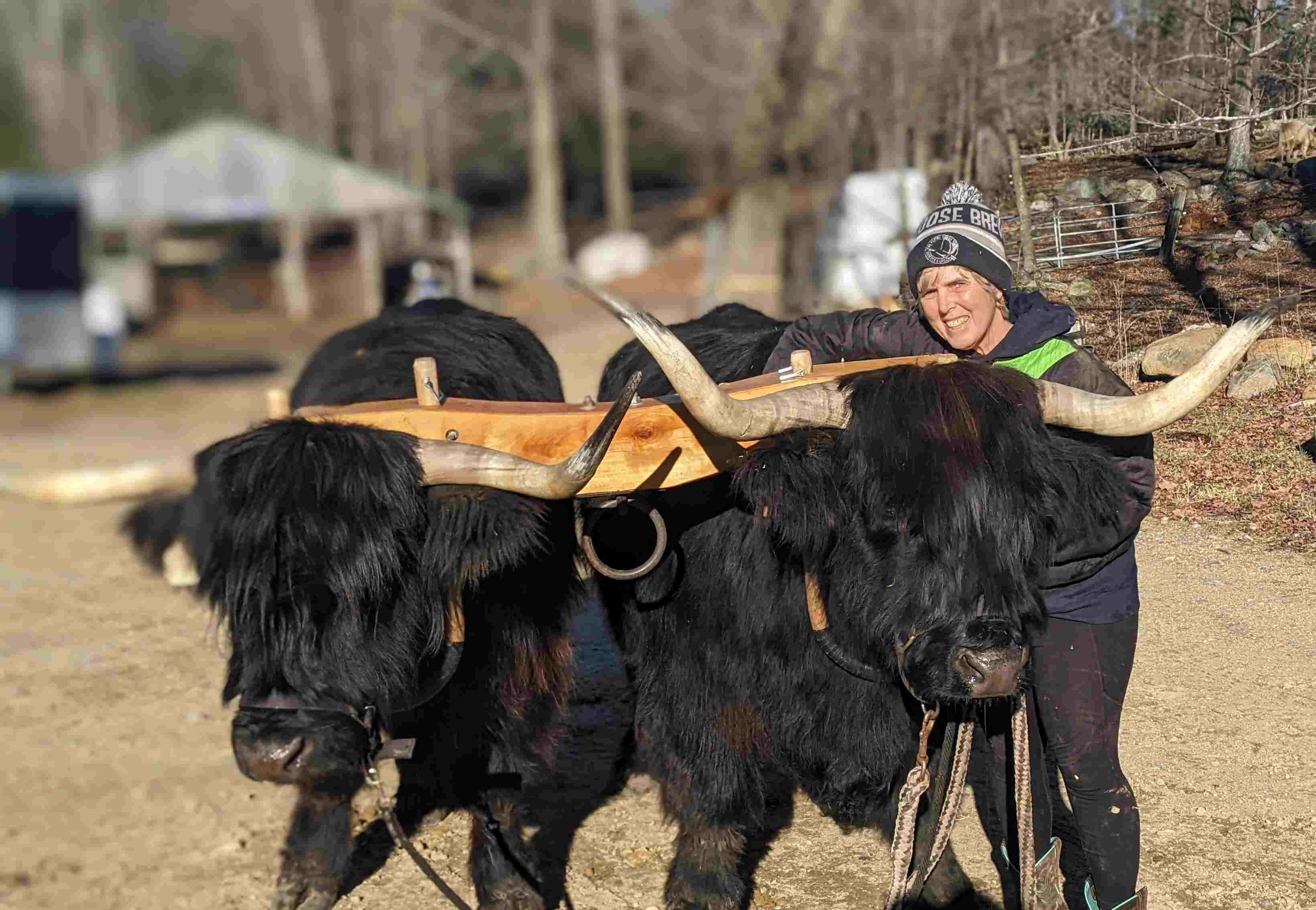How the Amish Live Without Electricity
posted on
February 26, 2023
Sarah's pantry contains a year's supply of canned peaches, vegetables, fruits, and meat. She gave me a jar of delicious peaches and showed us how Amish refrigeration works.

Could you live well without electricity? A few days on an Amish farm in Ohio showed me how it’s done. Earlier this month, husband Bruce and I delivered a cow to Harley and Sarah, who invited us to stay on a bit.
The Amish people want to keep themselves intact and apart from the modern world, which is why they hold modern technology at arm’s length. Where do they draw the line?
Here’s where my friend Harley draws it. He won’t have a telephone in the house, so he keeps it in a small building on the edge of his property, powered by his non-Amish neighbor's electricity. He won’t own or drive an automobile, but last fall he hired a driver, truck, and trailer to come to New Hampshire to pick up 11 of my Highland cows.
Laundry
Electricity is not allowed, but the use of propane-powered motors is. While they can use a commercial laundromat, most Amish women do laundry using a motor, located outside the house that drives a shaft that rotates an agitator in the drum of a washtub. Sarah, our hostess, added hot water from a nearby hot-water tank and some soap and then stuffed sheets and clothes into the washtub. Later she cranked the items through a wringer into a rinse tub. After rinsing, she put each item through the wringer again, dropping the wash into a third tub. With the help of her son, Lavon, they hung the laundry on a line with a pulley system that carried the clothes high over a small pasture in the front yard.
Sarah washed a pile of laundry that would have been more than 10 loads in my electric washer. The drying made sense too. Clothes last so much longer when air dried and, except in freezing weather, it’s easy with Sarah's setup.
Handmade Clothes
The families’ exquisite clothing was hand-made by Sarah. She showed me her sewing room with a treadle foot-operated Singer sewing, just like my grandmother used, and told me she shares patterns with other Amish women.
How about refrigeration? The family uses ice from a nearby pond. They extract blocks of ice using horsepower and saws and haul the ice blocks to an insulated storage space in the house's basement. Sarah told me the ice lasts 12 months and sometimes longer. The cold air is channeled through a vent into a refrigerator of sorts.
The family does a lot of canning. Sarah showed me shelves stacked with jars of peaches, onions, vegetables, and meat--enough to feed her family for a year. Sarah gave me a jar of peaches to take home.
Woodstove Heating
At dinner, we drank raw milk from their Jersey cow, homemade bread, butter, and creamy yogurt. Everything was from Sarah's pantry, and there was plenty of it. My favorite was Sarah's chocolate cake with a buttery frosting.
The house, always warm, was heated by a central wood-burning cooking stove. We were astonished at the uniform heat. The house had no cold spots, and the stove ran all day on a few armfuls of wood. Who needs a microwave when the stove top is always hot, ready to heat a cup of coffee or brew some tea? I don’t know what they do in summer.
Hot Water Showers
The stove also heated water for the shower. Sarah filled a bucket with hot water, then added some cold water until it felt just right. Then she poured the warm water into a bucket hanging in the shower. I turned the handle on the shower bucket and gravity did the work. A steady stream of water poured over me, not quite as robust as a modern shower but good enough. I turned off the spout, soaped up, then on again to rinse. With lots of water left in the bucket, I stood in the luxury of falling water until the bucket was empty.
The kitchen, bath, pantry, and washroom all had running water, courtesy of gravity.
Spring Water
There was another source of water for the cattle, a spring. A pipe feeds spring water into a concrete tub. The constant flow keeps the tub free of ice most of the time, so the cattle had a clean, delicious water source. I'm jealous.
Our visit was a peek into how my farm's namesake, Miles Smith, lived, and I’m eager to learn more. We've scheduled another trip in June to see how Harley harvests 6,000 bales of hay with horses. I can't wait!



